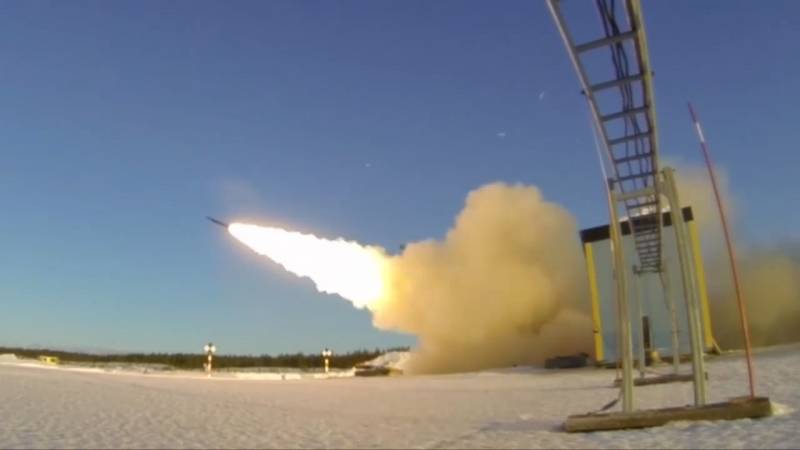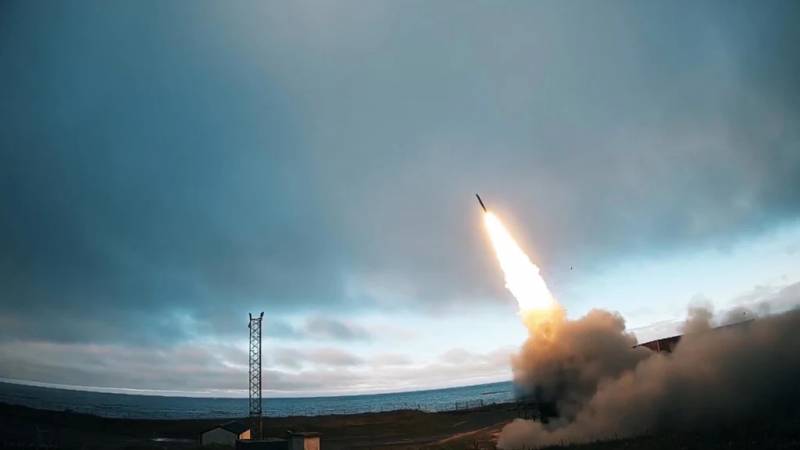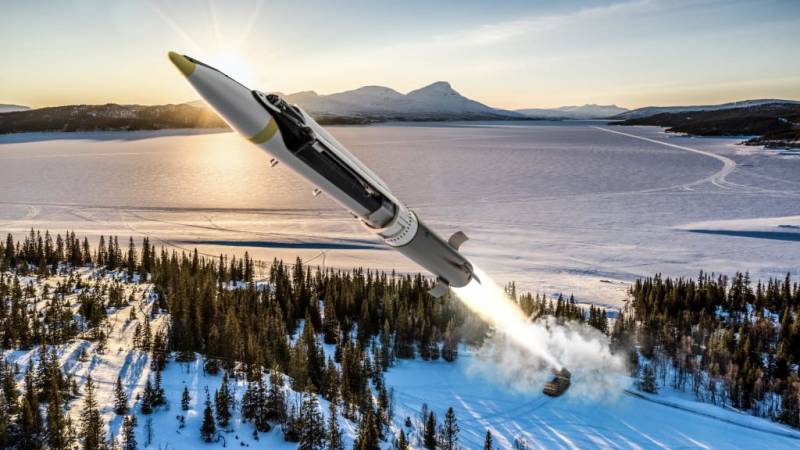Unclear Past, Uncertain Future: Delivery of GLSDB Ammunition to Ukraine

A few months ago, it became known that the United States could provide the Kyiv regime with GLSDB guided munitions for MLRS and HIMARS launchers. However, it soon became clear that the supply of such weapons will start in a few months. To date, the plans of the American side and the possibility of delivery as a whole have not changed. A full-fledged shipment of serial ammunition will be able to begin no earlier than autumn.
Under discussion
The possibility of supplying GLSDB products to Ukraine has been discussed since last autumn. The initiator of this process was Boeing, which is one of the developers of such weapons. In November, she suggested that the Pentagon launch mass production and use it to help the Kyiv regime. The military department got acquainted with this proposal, but did not disclose its opinion on this issue.
In the future, the American media have repeatedly reported that the issue of GLSDB supplies has already been resolved, and such weapons will be included in the next aid package or packages. In early February, this information was confirmed. The Pentagon has announced a new package that includes long-range ammunition for the HIMARS MLRS. Their type was not disclosed in the official press release, but Pentagon representatives indicated that these were GLSDB products.
Planned delivery dates were not named. In turn, the press found out that Boeing and allied companies are not yet ready for mass production of new ammunition. It takes a few more months to get it up and running. The first batches of GLSDB will be sent to Ukraine only in autumn.

However, American ammunition fell into the hands of the Kyiv regime much earlier. At the end of March, the Russian Ministry of Defense reported that during the next shelling, the enemy used not only regular missiles for HIMARS, but also GLSDB guided munitions. One such target was successfully shot down. Another product of this type was destroyed in flight a few days later, in mid-April.
Official position
After the April success of the Russian air defense, no new cases of the use of GLSDB ammunition were reported. In addition, the topic of their delivery as a whole faded into the background. It was raised again only a few days ago, and this time the official made some very interesting statements.
On June 22, the European Affairs Subcommittee under the Foreign Affairs Committee of the US House of Representatives held regular hearings. At the event, Deputy Assistant Secretary of Defense Laura K. Cooper, who deals with Russia, Ukraine and Eurasia as a whole, delivered a security presentation. Among other things, she was asked questions about the supply of weapons to Ukraine, incl. long range systems.
Answering questions from legislators, L. Cooper said that the Pentagon still does not plan to provide Kyiv with ATACMS operational-tactical missiles. The main reason for this is not a possible negative reaction from Russia, but the risk of depleting its own stocks of such weapons. At the same time, the official noted that other types of precision-guided munitions for MLRS / HIMARS are also available to the foreign partner.
In particular, it is in principle possible to transfer GLSDB products. However, mass production of such ammunition has not yet begun and will start only in the fall. Then Ukraine can expect to receive them. L. Cooper did not disclose other details of plans and opportunities. At the same time, she agreed to discuss this topic with congressmen, but in a closed format.

Obscure past
The situation with the supply of GLSDB ammunition remains unclear and raises questions. The available information on this topic does not reveal the whole picture, and official reports from different countries even contradict each other. How things actually work is the big question. However, some assumptions can be made.
Judging by the statements of recent months, the American military and political leadership nevertheless decided to provide the Kyiv regime with GLSDB products. They were even included in one of the previous aid packages. At the same time, mass deliveries of such weapons can begin only after the launch of full-fledged production, which is expected by autumn. Apparently, Boeing has already received an order for serial ammunition of this type and is preparing for production.
It is easy to see that several months should pass from the announcement of the aid package to the actual delivery of ammunition. This approach has already become commonplace. Far from all the promised products are handed over to the Kyiv regime as soon as possible. Often the preparation of the delivery is stretched for several months, and this also happens with the shipment of materiel from stock.
Pentagon officials say shipments of GLSDB ammunition have not yet begun. At the same time, the Russian Ministry of Defense has already reported the destruction of two such products. It cannot be ruled out that there was some kind of mistake on our part - they could have mistaken another missile for HIMARS or a standardized bomb for GLSDB guided munitions.
However, another explanation can be found. Thus, the United States could well transfer to Ukraine a small amount of available GLSDBs, previously manufactured for testing. Due to this, they could help a foreign partner, as well as test their latest development in a real armed conflict.

If this is so, then only a few GLSDB ammunition fell into Ukraine - the remnants of an experimental batch. The use of a few products was not crowned with success. Both known launch episodes ended with the destruction of ammunition by Russian air defense systems. At this point, the experimental ammunition ended, or the American side recommended that they no longer be used. It also cannot be ruled out that the rest of the batch was destroyed along with the warehouse or warehouses during the next Russian strike.
Potential Threat
Recall that the GLSDB (Ground-Launched Small Diameter Bomb) product is a special guided munition for the HIMARS MLRS, made using a serial bomb. This project has been developed over the past few years by Boeing and Saab by order of the Pentagon. To date, the experimental products have been tested and are ready for mass production.
The GLSDB can be thought of as a missile with a specific look. It is assembled from a solid propellant engine from an M26 rocket for HIMARS / MLRS and a GBU-39 / B SDB glide bomb. The engine is responsible for the launch from the ground launcher, climb and speed. After running out of fuel, the engine is reset, and the GBU-39B bomb continues to fly independently in non-powered mode.
In terms of dimensions and weight, the GLSDB product is almost the same as the GMLRS series projectiles. The "combat stage" in the form of an SDB bomb has a length of 3,9 m with an outer diameter of 240 mm. Caliber - 270 kg, of which 93 kg falls on the warhead. On the body of the bomb there is a wing and cruciform plumage, which open after launch. For guidance, a combination of satellite and inertial navigation is used.

The maximum launch range of SDB from an air platform reaches 150 km. Declared the possibility of firing in any direction, incl. back relative to the launcher, however, in this case, the maneuver worsens the range.
The GLSDB guided munition was created in order to improve the combat qualities of the American-designed MLRS. The most advanced serial ammunition for HIMARS has a range of just over 90 km. Due to the abandonment of regular combat units and the use of a planning bomb, it was possible to dramatically increase the range. With all this, the highest degree of unification with the Air Force arsenals is achieved, which should positively affect the cost and complexity of production and operation.
The future is in question
As early as last year, Boeing offered to purchase GLSDB ammunition from it for shipment to Ukraine. A few months later, this idea was approved and entered into the next package of military-technical assistance. However, a full-fledged series and mass deliveries of such weapons are still a matter of an uncertain future. As a possible date for the start of deliveries, autumn of this year is called.
Whether the industry will meet such deadlines is unknown. In addition, since March-April, the expediency of providing assistance in the form of GLSDB products has been questionable. It is likely that there was no confusion in the spring, and Ukraine did receive a small amount of such weapons, and the Russian army stopped their use. In this case, there is no point in continuing deliveries and increasing their pace.
Moreover, further losses from Russian air defense fire could damage the reputation of GLSDB munitions and prevent their entry into the international market. Whether the Pentagon and Boeing are ready for such losses will become clear in the coming months.
Information